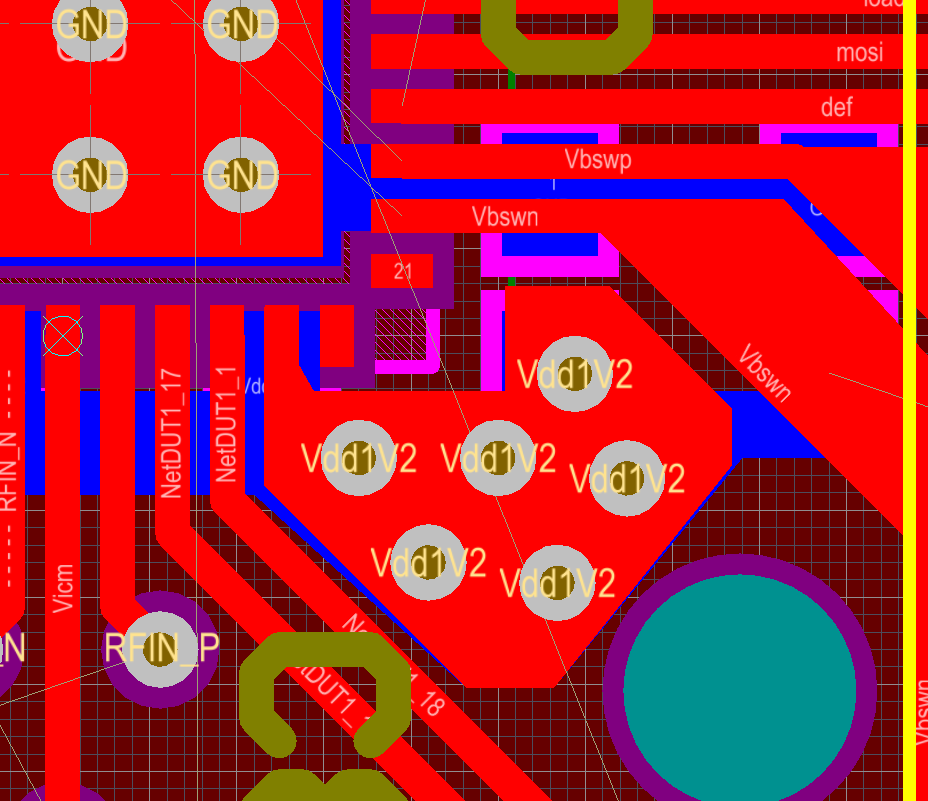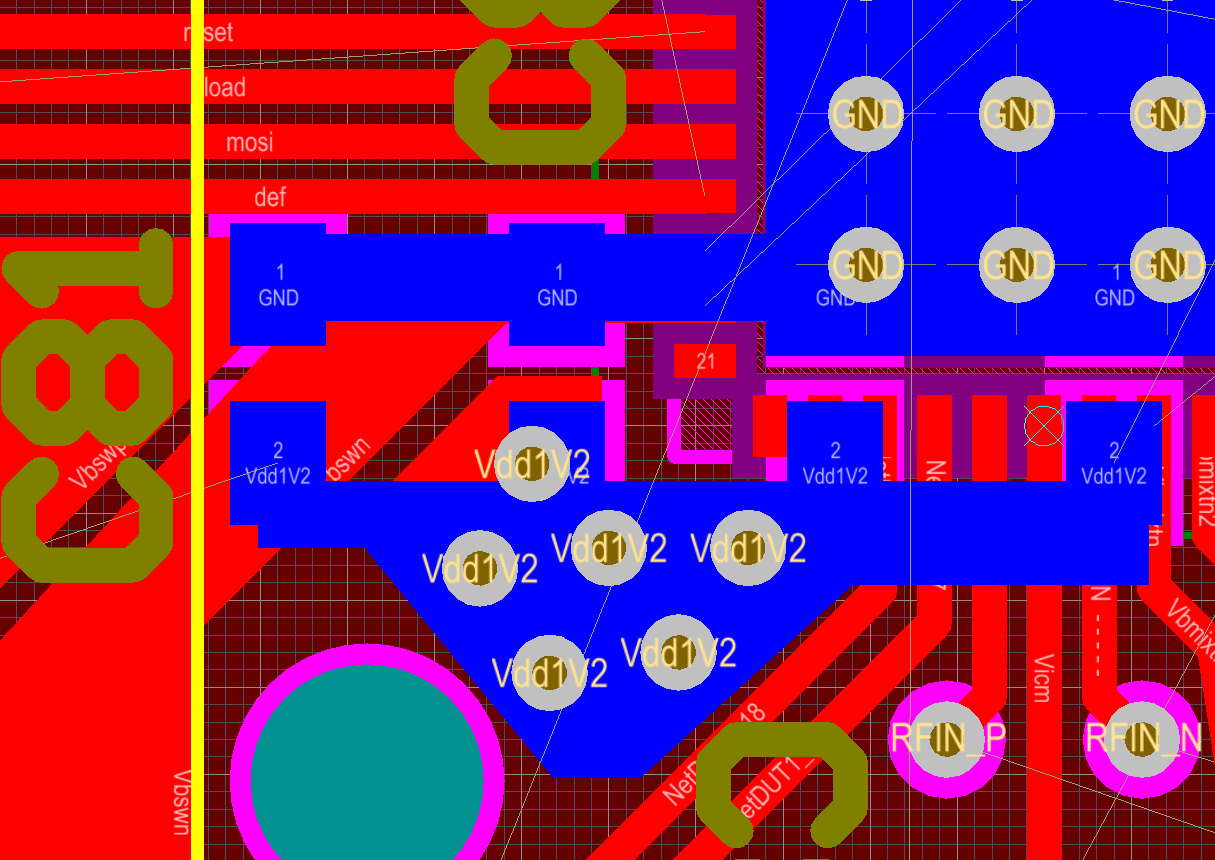There are already many questions about proper placement of decoupling caps in different situations (multiple layers, different sides etc).
As a general rule of thumb (e.g. How to place decoupling capacitor in four-layer PCB?), it is frequently recommended to directly connect the decoupling caps between the IC pins and from there a via to power/ground plane. The reason is to ensure that the currents flow through the cap.
Based on this Decoupling cap: Closer to chip but with via or farther without via? and this How important is it to put decoupling caps on the same side of the PCB? question I have decided to to put my caps at the opposite side. Furthermore, I will have an 8 layer board with multiple ground planes/power planes.
In order to connect my decoupling caps I have a forest of vias from the VDD pin to the other side of the board. On the other side, I connect the caps between the ground paddle and the vias.
However, in order to follow the rule of thumb above, I should not connect the vias to the ground plane. Instead, use separate vias to connect the cap to the supply plane.
This seems quite wasteful and odd to me. To make the long question short:
When placing decoupling cap at the other side of the board, is it ok to connect the power/ground planes with the same vias that connect the cap and the chip or should they be separately connected?
In order to give a precice example, this shows front and back layout:
As can be seen, the 6 vias labeled Vdd1V2 also connect to the power plane Vdd1V2 directly. I do not have separate vias to connect the (then local) Vdd1v2 network on the back to the power plane.


